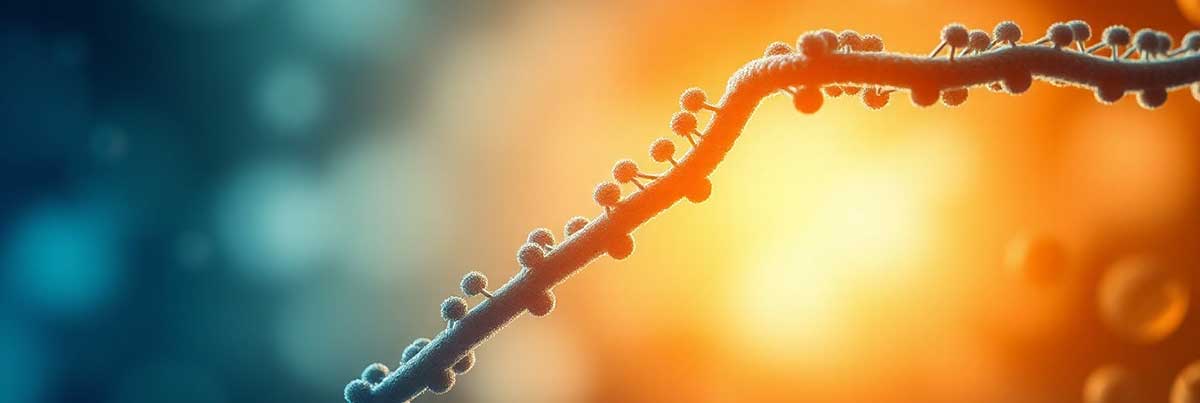
The history of genetic engineering began in the early 1900s with the works of the Austrian monk and scientist Gregor Mendel. Mendel’s work led to the establishment of genetics as a scientific field. From this genetic engineering would appear through the works of other scientists.
The 1940s to 1950s
Of course, plant breeders long ago learned how to alter the seeds. But in 1944, Oswald Avery Colin McLeod and Maclyn McCarty discovered that DNA was the carrier of genetic information.
This discovery led to intense studies on DNA and its properties. The breakthrough came in 1953 when Watson and Crick decoded the structure of the DNA, vital to the history of genetic engineering.
During the 1960s, Ian Wilmut started developing the techniques for cloning animals using cells of other mammals. It was in 1968 that the Swiss microbiologist Werner Arber discovered restriction enzyme.
The following year type II restriction enzymes were uncovered by American biologist Hamilton Smith. This discovery, along with the works of Daniel Nathan, broke new ground in DNA research.
The 1970s
The 1970s saw an increase in research into genetic engineering. Most of the experiments were on bacteria and other microorganisms. The research was focused on the plasmids, DNA rings discovered in bacteria. It was during this decade that gene isolation and alteration techniques were developed in the US.
These discoveries were vital in the history of genetic engineering. It allowed scientists to insert genes into other plants or cells. This could also be done on animals. In effect this changed the heredity of the organism. Further research showed that type I and II enzymes were pivotal in genetic research.
In 1973, Herbert Boyer and Stanley Cohen invented a process for slicing DNA and joining it with other DNA parts. Adding in other genes, they were able to make bacteria reproduce. This technique would be used to produce insulin. It was also in 1976 that the National Institute for Health released guidelines for cutting DNA.
The 1980s and 1990s
By this time, bacterially produced insulin had been given FDA approval. The decade was also marked by efforts to introduce gene slicing to higher forms of organisms. For the first time in the history of genetic engineering, scientists inserted a human growth hormone in a mouse. The result was that the mouse grew to twice its size.
In 1982, scientists successfully moved a gene from one fruit fly into another. Scientists also showed it was possible to interchange plant genes. In 1986, a genetically altered virus turned vaccine went on sale. The following year it was concluded that moving genes from one species to another posted no danger to the environment.
In 1990, rennin was approved by the FDA. It was the first time that an engineered gene product got such an approval. In 1997, Ian Wilmut and his colleagues cloned a mammal from the cells of another animal. The result was the cloned sheep called Dolly.
Today genetics plays a big part in the success of hair transplants
The history of genetic engineering is still fraught with controversy and debate. How it will be used in the future remains to be seen. But there is no question it will influence society in the coming years.
Gregor Mendel, an Austrian monk and scientist, is known as the father of genetics. His experiments with pea plants in the early 1900s established the fundamental principles of heredity, which laid the groundwork for the development of genetic engineering.
In 1944, scientists Oswald Avery, Colin McLeod, and Maclyn McCarty discovered that DNA is the molecule responsible for transmitting genetic information, a discovery that catalyzed further research into genetic engineering.
James Watson and Francis Crick uncovered the double-helix structure of DNA in 1953. This understanding of DNA’s physical structure was crucial for later manipulation and engineering of genetic material.
Restriction enzymes, discovered by Werner Arber in 1968 and further explored by Hamilton Smith and Daniel Nathans, allowed scientists to cut DNA at specific points. This enabled precise gene editing and laid the foundation for recombinant DNA technology.
Herbert Boyer and Stanley Cohen developed a method to cut and splice DNA, creating recombinant DNA that could be introduced into bacteria. This technique allowed bacteria to produce useful substances, like insulin, and became a cornerstone of modern biotechnology.
In the 1980s, genetically engineered insulin produced by bacteria was approved by the FDA, marking a major milestone in the application of genetic engineering in medicine.
In 1997, Ian Wilmut and his team successfully cloned Dolly the sheep from the cells of another adult sheep. This was the first time a mammal was cloned from an adult somatic cell, showcasing the potential of cloning technology.
Genetic engineering continues to raise ethical, environmental, and safety concerns. Debates persist around cloning, gene editing in humans, GMO crops, and how far science should go in altering the genetic makeup of living organisms.
Learn more about Gregor Mendel’s contributions to genetics
https://www.nature.com/scitable/topicpage/gregor-mendel-and-the-principles-of-inheritance-593
The National Library of Medicine
Books and research on gentic engineering